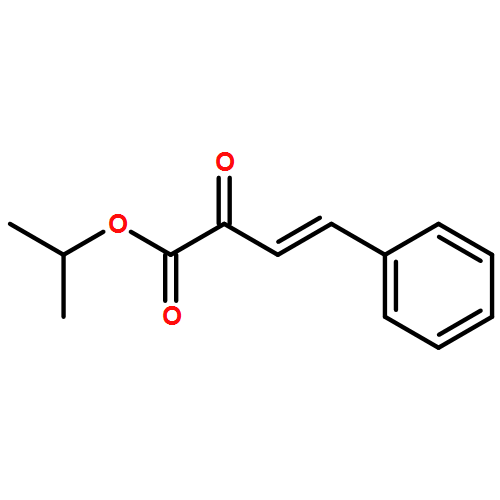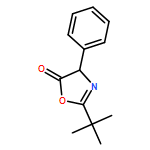Co-reporter:Lulu Wu;Haibin Song;Liangfu Tang;Zhenghong Zhou;Chuchi Tang
Advanced Synthesis & Catalysis 2013 Volume 355( Issue 6) pp:1053-1057
Publication Date(Web):
DOI:10.1002/adsc.201300086
Abstract
Optically active 2H-thiopyrano[2,3-b]quinolines with three contiguous stereocenters have been synthesized via a chiral bifunctional squaramide-catalyzed tandem Michael–Henry reaction between 2-mercaptoquinoline-3-carbaldehydes and nitroolefins. The reactions proceed with excellent diastereo- and enantioselectivity to give the title compounds in high yields with high levels of diastereo- and enantioselectivity (up to >99/1 dr and >99% ee, respectively).
Co-reporter:Yunting Liu;Haibin Song;Zhenghong Zhou;Chuchi Tang
Advanced Synthesis & Catalysis 2013 Volume 355( Issue 13) pp:2544-2549
Publication Date(Web):
DOI:10.1002/adsc.201300552
Co-reporter:Keling Hu, Aidang Lu, Youming Wang, Zhenghong Zhou, Chuchi Tang
Tetrahedron: Asymmetry 2013 Volume 24(15–16) pp:953-957
Publication Date(Web):31 August 2013
DOI:10.1016/j.tetasy.2013.07.010
We have developed an efficient bifunctional squaramide catalyst for the asymmetric tandem Michael addition–cyclization of malononitrile to functionalized nitroolefins. This organocatalytic asymmetric reaction provides convenient and valuable access to highly functionalized 2-amino-4H-chromene derivatives, which possess important biological activities, in good yields with moderate to high enantioselectivities (up to 95% ee).Figure optionsDownload full-size imageDownload as PowerPoint slide3-((S)-3-Phenyl-1-(piperidin-1-yl)propan-2-ylamino)-4-(3,5-bis(trifluoromethyl)phenylamino)cyclobut-3-ene-1,2-dioneC26H25F6N3O2[α]D20=-90.0 (c 1.0, DMSO)Source of chirality: l-PhenylalanineAbsolute configuration: (S)3-((S)-3-Methyl-1-(piperidin-1-yl)butan-2-ylamino)-4-(3,5-bis(trifluoromethyl)phenylamino)cyclobut-3-ene-1,2-dioneC22H25F6N3O2[α]D20=-85.0 (c 1.0, DMSO)Source of chirality: l-ValineAbsolute configuration: (S)3-((S)-3,3-Dimethyl-1-(piperidin-1-yl)butan-2-ylamino)-4-(3,5-bis(trifluoromethyl)phenylamino)cyclobut-3-ene-1,2-dioneC23H27F6N3O2[α]D20=-75.0 (c 1.0, DMSO)Source of chirality: l-tert-LeucineAbsolute configuration: (S)(R)-2-Amino-4-nitromethyl)-4H-chromene-3-carbonitrileC11H9N3O387% ee[α]D25=-21.5 (c 1.5, CHCl3)Source of chirality: Asymmetric organocatalysisAbsolute configuration: (R)(R)-2-Amino-6-fluoro-4-nitromethyl-4H-chromene-3-carbonitrileC11H8FN3O374% ee[α]D25=-26.0 (c 1.0, CHCl3)Source of chirality: Asymmetric organocatalysisAbsolute configuration: (R)(R)-2-Amino-6-chloro-4-nitromethyl-4H-chromene-3-carbonitrileC11H8ClN3O362% ee[α]D25=-40.5 (c 1.2, CHCl3)Source of chirality: Asymmetric organocatalysisAbsolute configuration: (R)(R)-2-Amino-6-bromo-4-nitromethyl-4H-chromene-3-carbonitrileC11H8BrN3O376% ee[α]D25=-10.0 (c 0.8, CHCl3)Source of chirality: Asymmetric organocatalysisAbsolute configuration: (R)(R)-2-Amino-6,8-dibromo-4-nitromethyl-4H-chromene-3-carbonitrileC11H7Br2N3O395% ee[α]D25=-10.0 (c 1.0, CHCl3)Source of chirality: Asymmetric organocatalysisAbsolute configuration: (R)(R)-2-Amino-6-nitro-4-nitromethyl-4H-chromene-3-carbonitrileC11H8N4O560% ee[α]D25=-60.0 (c 1.0, CHCl3)Source of chirality: Asymmetric organocatalysisAbsolute configuration: (R)(R)-2-Amino-6-methoxy-4-(nitromethyl)-4H-chromene-3-carbonitrileC12H11N3O441% ee[α]D25=-35.0 (c 1.0, CHCl3)Source of chirality: Asymmetric organocatalysisAbsolute configuration: (S)(R)-2-Amino-6-methyl-4-nitromethyl-4H-chromene-3-carbonitrileC12H11N3O357% ee[α]D25=-25.0 (c 1.5, CHCl3)Source of chirality: Asymmetric organocatalysisAbsolute configuration: (S)(R)-2-Amino-7-methyl-4-nitromethyl-4H-chromene-3-carbonitrileC12H11N3O362% ee[α]D25=-35.0 (c 1.0, CHCl3)Source of chirality: Asymmetric organocatalysisAbsolute configuration: (R)(R)-2-Amino-8-methyl-4-nitromethyl-4H-chromene-3-carbonitrileC12H11N3O367% ee[α]D25=-16.7 (c 1.0, CHCl3)Source of chirality: Asymmetric organocatalysisAbsolute configuration: (R)(R)-3-Amino-1-nitromethyl-1H-benzo[f]chromene-2-carbonitrileC15H11N3O381% ee[α]D25=-45.0 (c 1.5, CHCl3)Source of chirality: Asymmetric organocatalysisAbsolute configuration: (R)
Co-reporter:Aidang Lu, Keling Hu, Youming Wang, Haibin Song, Zhenghong Zhou, Jianxin Fang, and Chuchi Tang
The Journal of Organic Chemistry 2012 Volume 77(Issue 14) pp:6208-6214
Publication Date(Web):June 21, 2012
DOI:10.1021/jo301006e
A primary amine-thiourea organocatalyzed intramolecular Michael addition access was developed for the synthesis of trans-dihydrobenzofurans. Under the catalysis of an (R,R)-1,2-diphenylethylamine derived primary amine-thiourea bearing a glucosyl scaffold, the corresponding trans-dihydrobenzofurans were obtained in high yields with excellent level of enantioselectivities (94 to >99% ee). Moreover, an in situ isomerization occurring at high temperature gave good to excellent trans/cis ratios as well (trans/cis: 84/16–96/4).
Co-reporter:Tao Liu, Youming Wang, Guiping Wu, Haibin Song, Zhenghong Zhou, and Chuchi Tang
The Journal of Organic Chemistry 2011 Volume 76(Issue 10) pp:4119-4124
Publication Date(Web):April 5, 2011
DOI:10.1021/jo2002825
By employing a cinchonine-based thiourea as catalyst, highly enantioselective Michael addition reactions of 2-hydroxy-1,4-naphthoquinone to β,γ-unsaturated α-ketophosphonates were realized. The reaction afforded the corresponding β-substituted carboxylates in excellent yields with high levels of enantioselectivities (94−>99% ee) upon quenching the generated parent structures with DBU and MeOH as a second nucleophile.
Co-reporter:Aidang Lu, Tao Liu, Ronghua Wu, Youming Wang, Guiping Wu, Zhenghong Zhou, Jianxin Fang, and Chuchi Tang
The Journal of Organic Chemistry 2011 Volume 76(Issue 10) pp:3872-3879
Publication Date(Web):April 5, 2011
DOI:10.1021/jo2002819
Based on different chiral diamine skeletons, a series of bifunctional primary amine-thiophosphoramides were synthesized and screened as the catalysts for the asymmetric Michael addition of acetone to both aromatic and aliphatic nitroolefins. Under the catalysis of a thiophosphoramide derived from 1,2-diphenylethane-1,2-diamine, the corresponding adducts were obtained in high yields (up to >99%) with excellent enantioselectivities (97−99% ee) under mild reaction conditions. Moreover, the catalyst could be recovered via simple phase separation and reused at least five times without any loss of both catalytic activity and stereocontrol.
Co-reporter:You Ming Wang;Yu Xin Li;Bin Liu;Zheng Ming Li;Su Hua Wang
Heteroatom Chemistry 2005 Volume 16(Issue 4) pp:255-258
Publication Date(Web):25 MAY 2005
DOI:10.1002/hc.20067
Useful oxidation reaction of 2-alkyl(aryl)-3-methylthiopyrano[4,3-c]pyrazol-4(2H)-ones, leading to either the corresponding sulfoxides or sulfones, using hydrogen peroxide and acetic acid in 1,2-dichloroethane, is described. Bioassay results showed that the products have some herbicidal activity. © 2005 Wiley Periodicals, Inc. 16:255–258, 2005; Published online in Wiley InterScience (www.interscience.wiley.com). DOI 10.1002/hc.20067










![7H-Pyrano[2,3-d]thiazole-6-carbonitrile, 5-amino-2,7-diphenyl-](http://img.cochemist.com/ccimg/97900/97819-36-8.png)
![7H-Pyrano[2,3-d]thiazole-6-carbonitrile, 5-amino-2,7-diphenyl-](http://img.cochemist.com/ccimg/97900/97819-36-8_b.png)









